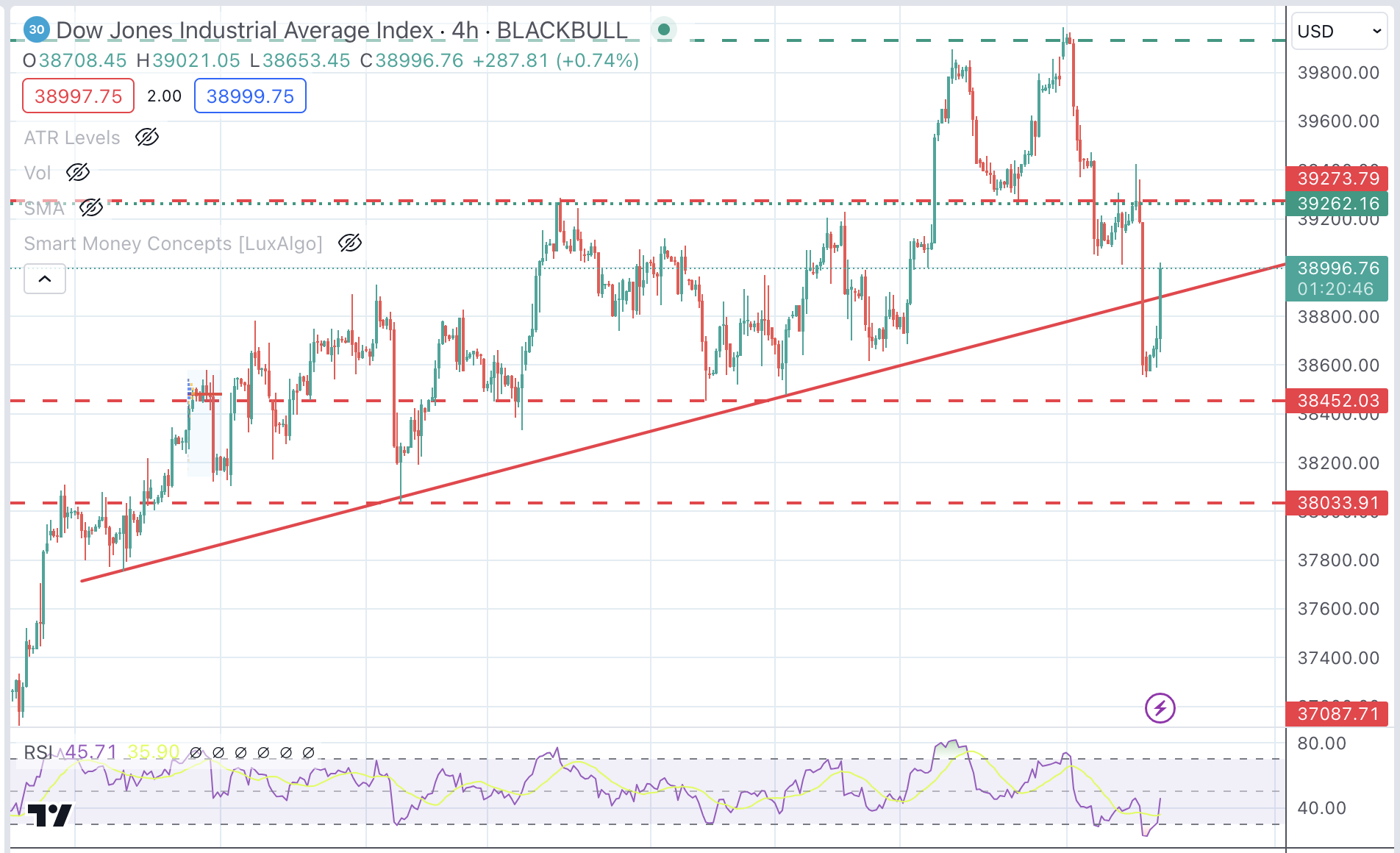- Dow Jones cuts losses after good US employment data
- The moderate slowdown in annual wage growth has eased investor concerns about the strong employment reading.
- The sharp reversal on the weekly chart suggests that a deeper correction could be underway.
He Dow Jones Industrials (DJIA) traded higher in the morning session on Friday, following the encouraging employment figures in the United States. However, the index is heading for its worst week in the last year, as strong US economic data has called into question the Federal Reserve's (Fed) easing plans.
Net employment increased in March by 303,000 people, following an increase of 270,000 in February and exceeding expectations of an increase of approximately 200,000. Wage figures revealed that salaries continue to rise, although the moderation in the annual rate appears to have eased investor concerns.
On Thursday, Minneapolis Fed President Neel Kashkari suggested that, with inflation stable at high levels, the bank might refrain from cutting rates this year, sending equity markets tumbling.
Wall Street's main indices are trading positive this Friday. The Nasdaq leads with an advance of 1.38% to 16,271 points, followed by the S&P 500, which rises 1.17% to 5,207 points, and the Dow Jones, which adds 0.9% to 38,943 points.
Dow Jones News
All sectors recorded gains, with communication services leading the way with an increase of 1.94%, followed by the Technology sector, with a rise of 1.64%. Industriales has gained 1.41%. The public services sector is the one that performs the worst, with an increase of 0.31%.
Amazon (AMZN) leads Friday's gains with a 3.17% rally to $185.66, followed by Salesforce (CRM), which advances 2.57% to $301.68. On the losses side, Intel (INTC) falls 2.16% to $38.87, still weighed down by the heavy losses recorded for 2023. It is followed by McDonald's (MCD) with a decrease of 0.86% to $267,777.
Dow Jones Technical Outlook
The index is paring some losses on Friday, but the strong reversal printed in the previous four sessions is forming a bearish engulfing candle on the weekly chart.
This formation usually anticipates a significant setback. Price action has found demand above 38,500 to bounce higher, but buyers could be challenged at the resistance at 39,265, which closes the path towards the high of 40,000.
To the downside, a break of 34.452 would confirm a trend reversal and increase bearish pressure towards 38.035.
Dow Jones 4-hour chart

Employment FAQs
Labor market conditions are a key element in assessing the health of an economy and, therefore, a key factor in the valuation of currencies. A high level of employment, or a low level of unemployment, has positive implications for consumer spending and therefore economic growth, boosting the value of the local currency. On the other hand, a very tense labor market – a situation in which there is a shortage of workers to fill vacant positions – can also have implications for inflation levels and, therefore, for monetary policy, since the low supply of labor work and high demand translate into higher salaries.
The pace at which wages grow in an economy is key for policymakers. High wage growth means households have more money to spend, which often translates into higher prices for consumer goods. Unlike other more volatile sources of inflation, such as energy prices, wage growth is considered a key component of underlying and persistent inflation, as wage increases are unlikely to be undone. Central banks around the world pay close attention to wage growth data when deciding their monetary policy.
The weight that each central bank assigns to labor market conditions depends on its objectives. Some central banks explicitly have labor market-related mandates that go beyond controlling inflation levels. The US Federal Reserve (Fed), for example, has the dual mandate of promoting maximum employment and price stability. Meanwhile, the only mandate of the European Central Bank (ECB) is to keep inflation under control. Even so, and despite the mandates they have, labor market conditions are an important factor for policy makers given their importance as an indicator of the health of the economy and their direct relationship with inflation.
Source: Fx Street
I am Joshua Winder, a senior-level journalist and editor at World Stock Market. I specialize in covering news related to the stock market and economic trends. With more than 8 years of experience in this field, I have become an expert in financial reporting.







